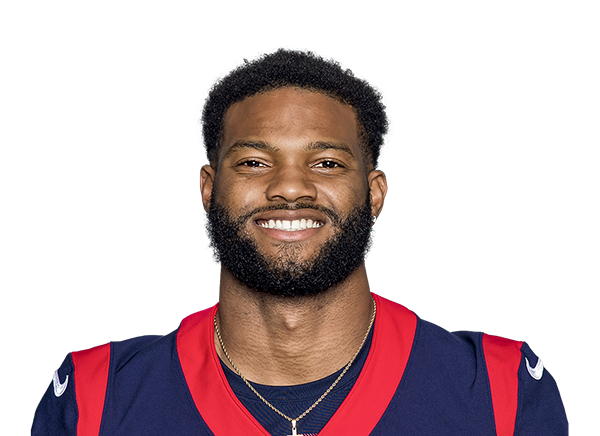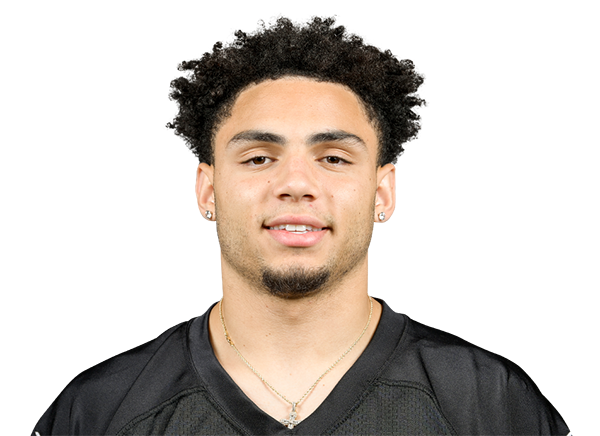The CODE Metric
The analytics revolution in sports has not only led to many new statistics used by front offices, but it is also spawned many creative minds to do the same for fantasy owners. Everyone is looking for the next projection model or statistic that is going to help them gain an edge on their competition. This series will try to help discern fact from fiction when it comes to the usefulness of statistics on fantasy performance.
The first edition starts with a metric I have been working on to help explain the efficiency of wide receivers based on their role. For every Julian Edelman who excels working underneath coverage, there is a Vincent Jackson plying his trade down the field looking for the homerun. Both of these players can have value for a dynasty lineup but understanding their effectiveness relative to expectations can prove to be more difficult. That is where CODE comes in.
What is CODE?
CODE stands for “Catch Over Depth Efficiency” and compares the catch rate of players relative to their average depth of target (aDOT, a great stat from Pro Football Focus). It is pretty self-explanatory that a five yard pass is going to be easier for a wide receiver to catch (and a quarterback to throw accurately) than a twenty yard pass. The bigger question revolves around what an acceptable catch rate is for a receiver who averages 7.6 yards per target (like Edelman) compared to one that has a 15.3 aDOT (Jackson).
Now, without going into the gritty details, both catch rate and aDOT have been normalized to account for quarterback play. This helps when dealing with a weaker armed quarterback making short passes like Alex Smith (6.0 aDOT) and one that is taking more shots down the field with his rifle arm like Cam Newton (9.9 aDOT). When Smith throws a twenty yard pass, it is much different (and rarer) than when Newton makes the same pass. The same logic applies to accuracy of a quarterback.
Ultimately, we are left with a good negative relationship (the higher a receiver’s aDOT, the lower his catch rate) that is predictable going forward. We can then use those predictions and compare them against each receiver’s actual performance to create a score, showing how efficient he is at catching the ball given the depth of his targets.
The score ranges from -10 to 10 with a few noticeable breaks as I dug deeper into the data:
4.0 to 10.0 – These are the players that over-index significantly, showing great hands given where they are targeted on the field. There is less risk with these players on a fantasy point per target basis and tend to excel when given expanded roles.
-2.0 to 4.0 – Elite players still live in this tier but are a little more volume dependent. These receivers can see more volatility from year to year but they won’t see drastic shifts in performance.
-10 to -2.0 – This is where risk lives and the ceiling lowers significantly. Many of these players fluctuate significantly from year to year in terms of fantasy points per target as they become more touchdown dependent. I wouldn’t ignore this tier but would be cautious investing a lot of assets, especially if a receiver consistently falls in this category.
[am4show have=’g1;’ guest_error=’sub_message’ user_error=’sub_message’ ]
Why use CODE?
It’s great to understand where a statistic comes from, but the bigger question is why should you use it? Well, by layering a player’s fantasy points per target against their CODE score (see chart below); we get a pretty solid correlation (0.61) that can help us in a few ways.
First, since both numbers are based on rates rather than aggregates, we can look at a player with less usage in a similar way to one that is already heavily featured in an offense. Second, we can analyze players who have seen changes in their offensive role (either more/less targets or a different responsibility) and gauge their productivity. Last, it will give us a means to compare players against one another and focus on how their ability to catch the ball is translating to fantasy performance.
Who are our CODEbreakers?
I decided to break this into a few groups. Let’s start with the rookies, breaking them into a few tiers:
Elite Rookies: Paul Richardson (9.3 CODE score), Odell Beckham (7.2), Donte Moncrief (7.0), Allen Robinson (6.2), Brandin Cooks (6.0), Mike Evans (4.1)
Not a ton of surprises here as many of these players looked great throughout the year, but the one that sticks out most to me is Paul Richardson. With just 39 targets on the year, we could see some correction here, but he had the third highest score among all receivers with 30+ targets. People forget that he had a strong season at Colorado prior to joining Seattle and instead focus on his slender frame. This is the type of upside buy low that is easy to get on board with.
Average Rookies: Jordan Matthews (1.0), Jarvis Landry (0.5), Allen Hurns (0.5), Marqise Lee (0.0)
This confirms the Jaguars’ abundance of riches at the receiver position. Lee did as expected with the targets he was given, but Hurns broke through and proved to be more than a one-week wonder. It is tough to say which of the two garner the larger percentage of targets behind Robinson, but they both seem capable of performing given the opportunity.
Mediocre Rookies: John Brown (-2.6), Davante Adams (-2.9), Sammy Watkins (-3.5), Martavius Bryant (-3.6), Kelvin Benjamin (-4.3)
Watkins was a disappointment as he came in with a lot of hype. Part of that was a second half funk that saw him catch 46.6% of his passes (52.4% overall). His first half numbers would have had him just behind Matthews and Landry. Watkins should rebound in year two and make a move up this list as he becomes accustomed to the grind of the season and perhaps some weather issues that adversely impacted the team. In case anyone wonders, I’m less optimistic on Bryant and Benjamin and see them being touchdown dependent to return value, a risky proposition for me. Brown and Adams meanwhile had inconsistent roles in their offense so some stability may cause them to improve.
Let’s move into some notable receivers hyped before or during the season and see how they fare (in no particular order):
Brian Quick (8.5, 5th highest score)/Stedman Bailey (5.9) – Cheating here by lumping a pair of productive Rams receivers together. Quick was on a roll before his season ending injury and his CODE score suggests just as much. He was stretching the field (16.7 adjusted aDOT) and catching balls at an absurd rate (67% adjusted catch rate, 56% expected catch rate). After his injury, it was Bailey who caught the ball and ran with it. While not the downfield threat Quick is (12.4 adjusted aDOT), he caught the ball extremely well (68% adjusted vs. 61% expected). Assuming Kenny Britt is out of town and Quick returns healthy, this pair could be extremely useful with bigger roles.
Justin Hunter (-9.1, 2nd lowest score) – The preseason hype was out of control and did not translate to the 2014 season, it actually saw a regression relative to 2013 (-6.3 CODE score). He was still flying down the field (14.7 adjusted aDOT) but remained unable to catch the ball (45% adjusted catch vs. 58% expected). Time to sell these shares and make peace with the fact that track star speed does not mean you are a good receiver.
Cordarrelle Patterson (-3.0) – Speaking of preseason hype and disappointment, Patterson was among the biggest busts at the position and saw a regression from his rookie season (-1.9). He struggled with changes in his role as the team wanted him further down the field (11.8 adjusted aDOT) compared to a season ago (8.3), exposing his hands as he caught 57% of adjusted passes compared to 62% expectation. If Minnesota decides to utilize him more as a short-yardage receiver that uses his athletic ability to turn it into a big gain, he should regain some value. If not, look out!
Michael Floyd (-0.4) – Another disappointment in the eyes of many was a victim of circumstance. His 2013 CODE score of 0.2 was not much different from his 2014 number. The issue was he had only 93 targets this year (vs 107 last year) while being sent further down the field (15.4 adjusted vs 13.6 in 2013) where catch rate lowers (57% adjusted vs. 61% in 2013). His catch rates for both seasons are in line with expectations so it is not a matter of talent here. Floyd needs to be used as less of a downfield threat and given a complete route tree to run in games to return to the consistent fantasy production of 2013.
Kenny Stills (10.0, Highest score) – I wanted to highlight Stills for a few reasons here. First, his late season run is looking less fluky, especially when his 2013 CODE score was a strong 6.7 on 46 targets; a good example of how this metric can be useful in looking forward to the next season. Stills caught an adjusted 72% of passes when he was expected to catch just 59%. He was not quite the downfield threat he was in 2013 (13.9 adjusted aDOT in 2014 vs. 17.9 in 2013) but he showed versatility in being an underneath option when Cooks went down with an injury. I’m buying anywhere I can as he could quickly be the second option behind Jimmy Graham in this offense.
Now let’s look at a few players who stand out and could breakout given an expanded role or other changes
Eric Decker (8.1) – Decker is the most likely to benefit from the coaching changes in New York. He is an efficient receiver stuck dealing with an inefficient offense (he caught 67% of his passes while the team only completed 58%). For comparison, Percy Harvin had a CODE score of -0.9 and Jeremy Kerley was a -0.4 in 2014. Decker is clearly the talent here and should be heavily featured by Chan Gailey, giving him some upside and a reasonable price tag this offseason.
Jarius Wright (7.8) – Hard for me to avoid Wright as he was my feature in the Summer Sleeper series and this is another opportunity to try and sell him to you. Let’s start with his CODE score from 2013: 7.2. Now, this is a guy who catches passes (70% adjusted) and his adjusted aDOT (12.6) indicates a player who is neither catching short passes nor stuck running fly routes. I like him over Charles Johnson who has a respectable CODE score (0.5) but is strictly a deep route runner (adjusted aDOT of 17.4). Wright is a more complete receiver in my eyes who is capable of being a solid contributor as a starter.
Jaron Brown (6.9) – Barely makes the cut with just 32 pass targets but is worth mentioning here for one simple reason: Larry Fitzgerald. Similar adjusted aDOT to Fitzgerald (8.7 vs 8.0 for Fitz) but his CODE score is much higher than the veteran’s (0.5). I could easily see Brown take some of those underneath targets if Fitzgerald left and be that type of steady possession receiver that never looks sexy in your lineup but is never the reason you lose either.
Kamar Aiken (9.9, 2nd highest score) – Another guy who barely qualifies with just 33 targets, Aiken could see an expanded role and has the tools to take advantage. With Torrey Smith a potential receiver of the past due to free agency, Aiken could inherit a bigger role in this offense. His 74% adjusted catch rate (against a 61% expected rate) signifies a player who makes use of the targets he is given. Add in the fact he is 6’2” and runs a 4.45 forty yard dash and the combine people have something to love as well.
[/am4show]
- Bowl Game Previews: CFB Playoff Semifinals - December 28, 2018
- The Narrative Fallacy and How it Compels Us - May 13, 2017
- 2017 NFL Draft – College Wide Receiver AIR - April 27, 2017

























































